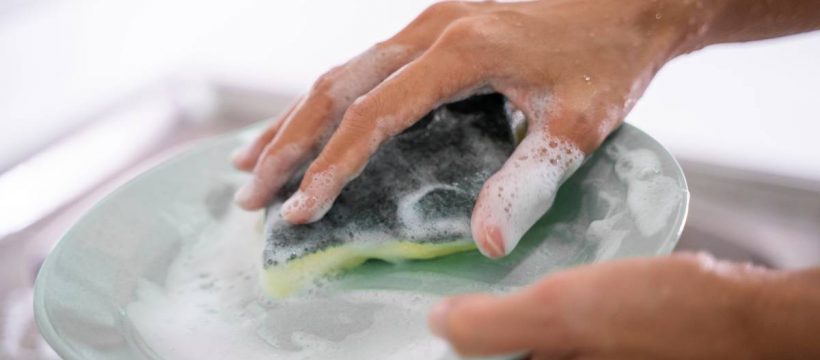European researchers tested bacterial growth and survival on dishwashing sponges and brushes – with surprising results.
Question:
I know that kitchen sponges can harbour bacteria. What is the best way to keep them clean?
Answer:
You never want to hear that a family member or friend has fallen ill after eating at your home. The fact is, kitchen sponges and cloths are prime culprits in spreading bacteria around the kitchen. On average, they contain millions of bacteria and many of us replace them only once a month.
Most bacteria are harmless or beneficial to humans. However, a relatively small list of pathogenic bacteria, such as salmonella and campylobacter, can cause food poisoning.
Kitchen sponge use differs among households, with some using them to wash dishes, while others prefer brushes. Most people use either a sponge or cloth to clean kitchen benches, sinks, fridges and stovetops.
Although they are handy at wiping up spills, as a result of their ability to absorb a lot of water, this characteristic becomes a hazard when it comes to bacteria. Damp sponges left sitting on the bench create a breeding ground for them. Salmonella, for example, dies off in dry sponges but can grow and multiply in damp ones. In contrast, brushes don’t absorb or hold water and dry out faster.
Researchers from Portugal and Norway recently tested bacterial growth and survival on dishwashing sponges and brushes. They found that soaking them in a chlorine treatment (at a concentration of 4000ppm) was the most effective method for reducing the total bacteria content. The next-best process was cleaning them in a dishwasher or soaking them in boiling water, followed by washing in detergent water and thorough drying. Heating in a microwave oven was one of the least-effective methods.
These findings differ significantly from an earlier study by the Agricultural Research Service in the US. It found that soaking a sponge in 10 per cent chlorine-bleach solution, lemon juice or deionised water killed between 37-87 per cent of bacteria. Microwaving killed 99.99 per cent of bacteria on sponges and a complete cycle in the dishwasher killed 99.9998 per cent. Similarly, less than 1 per cent of yeasts and moulds survived microwaving or a dishwasher cycle compared with a survival rate of between 7-63 per cent for the other methods.
So, why the difference between microwaving effectiveness in the two studies? The older study microwaved sponges for 1 minute at a power setting of 1300W, but the more recent study microwaved sponges for 1 minute at only 700w. So it seems lower-power microwaving may be less effective.
The World Health Organisation recommends using brushes rather than sponges for cleaning dirty dishes. Because dish brushes dry faster than sponges, there is a lower risk of growth or survival of pathogenic bacteria.
Brushes with handles also reduce contact between our hands and the cleaning surface that contains bacteria, thereby preventing contamination of our hands. It’s also easy to keep brushes clean by simply running them through a complete dishwasher cycle.
It’s best to use paper towels or single-use wipes for raw-food spills. In other words, avoid using your kitchen sponge in high-risk situations. If you do have to use a sponge to clean up a raw meat or poultry spill, clean it immediately afterwards or replace it, as any pathogens are not likely to die before the next use.
Finally, clean all kitchen sponges and brushes in a chlorine solution such as laundry bleach, a complete dishwasher cycle or in boiling water. If you use a microwave, wash the brush or sponge first to remove any built-up food matter, then microwave it on full power, bearing in mind that lower-power microwaves may not do as thorough a job as a hot dishwasher cycle.
Source: Read Full Article
